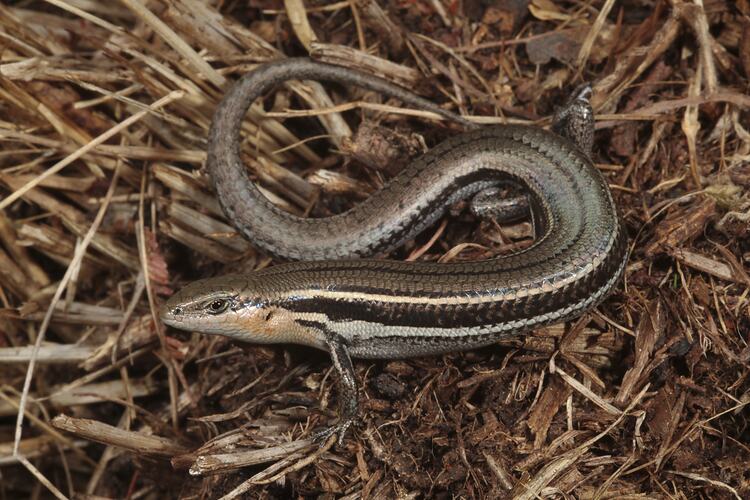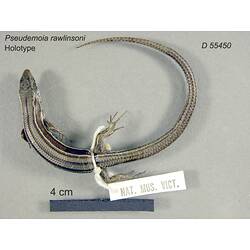General Description
Glossy olive brown dorsal colouration, cream ventral colouration, black vertebral and paravertebral stripes and cream dorsolateral stripe in 3rd scale row from vertebrae. 6 cm long (snout-vent) and up to 14 cm total length.
Biology
Glossy grass skinks are diurnal (active during the day) and feed on small invertebrates. Females give birth to 4 to 8 live young.
Distribution
South-eastern Australia, alpine regions of southern New South Wales and north-eastern Victoria and lowland areas in southern Victoria, south-eastern South Australia and north-eastern Tasmania.
Habitat
Humid and densely vegetated swampy areas such as marshland and the margins of creeks, swamps and lakes.
More Information
-
Animal Type
-
Animal SubType
-
Brief Id
Small skink with glossy brown back and cream and black stripes
-
Colours
Brown, Black, Cream
-
Maximum Size
14 cm
-
Habitats
-
When Active
Diurnal
-
Diet
Insects
-
Diet Categories
Invertebrates
-
Endemicity
-
Commercial
No
-
Conservation Statuses
CITES: Not listed, FFG Threatened List: Endangered, EPBC Act 1999: Not listed, IUCN Red List: Data Deficient
-
Taxon Name
-
Scientific Author
(Hutchinson & Donnellan, 1988)
-
Common Name
Glossy Grass Skink
-
Other Names
Swampland Cool-skink
-
Kingdom
-
Phylum
-
Subphylum
-
Class
-
Subclass
-
Order
-
Suborder
-
Infraorder
-
Family
-
Genus
-
Species Name
rawlinsoni


